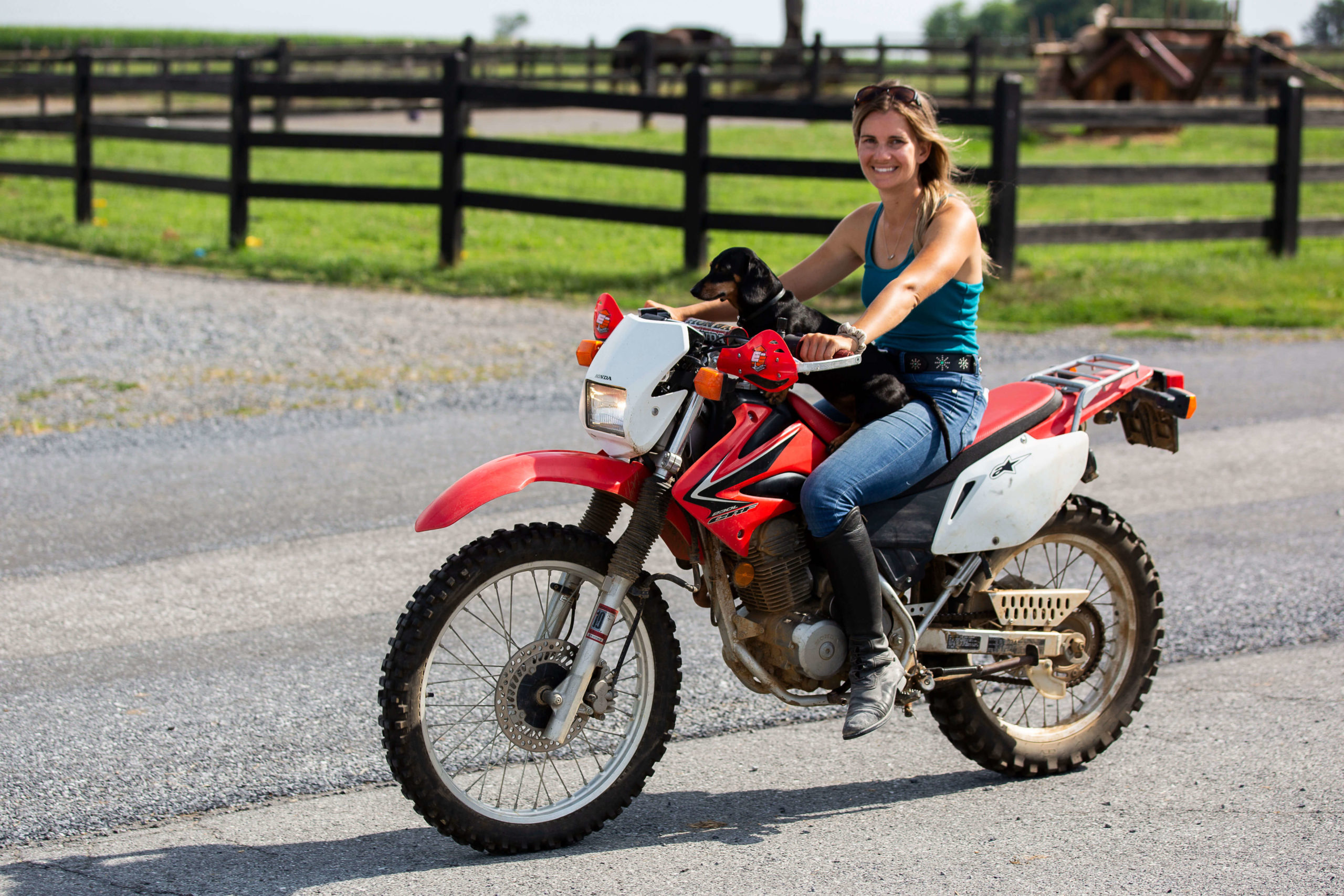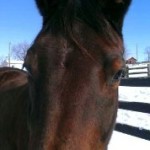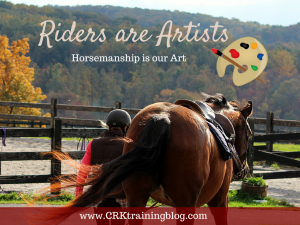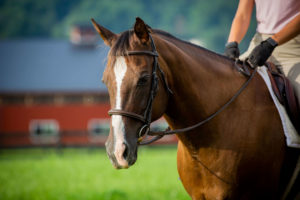 There has been a particular “toy” that I’d been obsessing over for several months. I wanted it so bad. It’s something I have always wanted to do and learn but I finally decided now was the time. A motorcycle – particularly a “dual-sport” bike so I could ride on both roads and trails. Well two weeks ago my wish came true when I found the perfect bike on my local craigslist for a great price and only an hour away.
There has been a particular “toy” that I’d been obsessing over for several months. I wanted it so bad. It’s something I have always wanted to do and learn but I finally decided now was the time. A motorcycle – particularly a “dual-sport” bike so I could ride on both roads and trails. Well two weeks ago my wish came true when I found the perfect bike on my local craigslist for a great price and only an hour away.
I had only ridden a motorcycle two or three times before in my life, only about 5 minutes each time, but for some reason I still pictured myself jumping on this new bike and ripping around like a pro. The motocross guys my boyfriend watches on youtube make it look so easy! It turned out to be a bit harder than I expected. One hour into my first afternoon of riding I had already wrecked into a creek and busted a turn signal off.
Several more days and hours of riding later, I still have a ton to learn, but I’m not wrecking into creeks anymore. What helped me the most was thinking about riding my horses and finding parallels between the two sports. The most important of these was to relax. I tell this to my students at the farm all the time, and how important having a calm mind and relaxed muscles are to being successful horseback. But here I was on the bike – arms braced, legs tight, and fiercely squeezing the handlebars. With my body so stiff, I couldn’t move effectively or readjust my balance. As soon as I relaxed, the turns and figure eights I was practicing immediately got better. Another important skill for riding the bike was looking ahead, not down, and especially not at what I was worried about running into – this one is certainly true on the horses as well.
Sharp turns and swerving still mess me up now and then, because when I’m riding the horses I don’t lean, but I do still weight the seat bone of the direction I am turning in and the horses move under that, so on the bike I started thinking “weight the seat bone” as I went through a turn and my steering improved dramatically. Too much movement with the hands on a horse or a bike is a bad thing!
Learning to ride my motorcycle is also reminding me of something else that is important about learning a new skill, and it’s this: you don’t really know something until you can do it automatically, without thinking. Just as I tell my riders to practice shortening the reins so that, in an emergency, they automatically shorten the reins instead of just yanking their hands back, I’m going to need more time riding my bike before I can stop without running through a mental checklist of clutch, shift down, apply front brake and rear brake… this is true with many new skills, I believe it takes lots of consistent practice before a new skill becomes habit – and of course we want to be sure we are creating the right habits!
So now it’s your turn! I know that many of my readers here also have bikes and are far better at riding them than I am – any tips or other parallels you think of? Is there another activity, such as skiing or running, which you find similar in some ways to riding?
I will see you in the comments!
Callie














22 Responses
Have fun but PLEASE becareful Callie!!
Yes, be careful! I think it must be confusing riding a motorcycle vs. a horse. My coach tells me “don’t lean going around corners as if you are riding a motorcycle!”
Hi Callie. Learning to ride a motorcycle is also on my bucket list. About three months ago I asked a friend of mine who owns and rides horses and bikes whether learning to ride a bike was easier than learning to ride a horse since I have struggled with mastering the trot and am still not cantering after a year of learning to ride . I felt so connected to you when I read this post of yours. So I am recommitting to my dream of owning and ride my horse and Harley Davidson; I am not giving up on either.
Dianne
Hi Dianne! Awesome! I know you can and will do both!
Hello again, Callie! I chuckled when I read this. I rode trail for a few years before buying a dual sport bike. I’d wholeheartedly recommend taking a Motorcycle Safety course in your area. Besides the fantastic instruction, most courses will give you a motorcycle endorsement on your driver’s license when you pass the course practical. It’s only a weekend long, it’s a lot of fun and it will make you so much more confident. Also, if you need to access a public road on your bike, you will be street legal.
Have fun!!!!!!!!!
-brooks
Hi Brooks! I am going to sign up for one of these courses – everyone I talk to recommends them!
Hello Callie.Year 2021(not 2014) here.I got back to m/bikes about 4 years ago.Yes,relax with confidence & knowing bike & your ability( no showing off.)cheers,Den.
I’m new to your blog, so first I want to say, you do a really great job of explaining a variety of equestrian topics.
I don’t usually contribute to blogs but your purchase of a motorcycle got my interest. I rode and raced off-road motorcycles for years before I got the horse bug. So I thought, since I have found your advice helpful, I would offer you a little advice about your new toy.
First of all, your dual-sport bike is kind of like a school horse that is used to teach both English and Western riding. Like that seasoned school horse – they are great teachers and real fun to ride.
By design dual-purpose bikes offer the rider two very different styles of riding. I guess I would compare off-road riding more to jumping. You sit very little in the saddle and where you place your weight is very important. For example over rough ground or jumps you’ll want to keep your weight back so your front wheel is light and can skip over the bumps. Over jumps you will want to land with more weight over you rear tire. And unlike road racing or street riding you won’t want to lean with your bike thru the turns. If you watch motocross riders you will notice that the bike leans in the direction of the turn but the upper body of the rider stays more upright.
Street riding, to some extent, reminds me more of Western Pleasure riding – where the rider sits deep in the saddle. Body position and weight placement are still very important but the horses center of gravity doesn’t change as drastically or quickly as compared to jumping.
I ride both jumpers and cutting horses. So I love both English and Western riding – but both require a different approach to riding to be successful. That’s the same as dirt riding and street riding both are fun, but both require a different approach to be successful.
I agree with the people who advised you to take a motorcycle course. This will really help to keep you safe on the street. Also, I would advise that you get some books or watch some videos on off-road riding, doing this will go a long way to keep you safe when you’re learning the ins and outs of dirt riding.
Thanks again for all the great information you put out there. Stay safe, and have fun riding your new bike.
Thanks Greg! I really enjoyed your input and I love how you compared riding on the street to off road. This was really helpful for me and your comparison to different styles of riding horses makes a lot of sense! Thanks again!
Great comparison of horse & m/bike riding Greg.Cheers,Den.
Good for you!! Motorcycles are sooo much fun! I’ve ridden them off & on for (~30? Oof!!) years. I agree with the suggestion to take the MSF class. It’s super helpful. I started on dirtbikes & then progressed many years later to my own street/sport bike. I prefer trails to roads for safety reasons but both are wonderful fun. Enjoy!!!
Thanks Melissa!
I’m a motorcyclist just learning about horses. I find I feel much in control of the motorcycle, but not the horse. Much to learn.
Tim
One big difference is that the motorcycle will always respond when you say apply brake or throttle. The horse is not always responsive!
Yes and a bike’s limitations and predictability can be fathomed quicker than a horse with a mind of its own! Both horses and bikes are great fun to ride, 1HP or 100HP, I still respect both.
There is only one thing to know riding a motorcycle on or off road; learn to go fast and when in doubt, go faster. Motorcycles only have two wheels and the rear wheel applies the power so when you lose speed you also lose traction. On loose stuff like sand, gravel, snow or mud your first reaction is to slow down but that’s when you get in trouble. Always keep a steady throttle, stay in the lowest gear possible for your speed to leave a repose time and stand on the pegs to balance the bike if it start to wander and always always always give it more gas.
Cheers,
Chris
Thanks Chris!
I actually started horseback riding a year *after* getting a motorcycle because my present location in NW Connecticut gives me this unique opportunity to live in a place that’s cluttered with horse farms. Here are some of my observations, keeping in mind that your and my levels of expertise in either activities are probably reversed (speaking from a 2014 point-of-view). I have a BMW F800 GT sport touring bike, but I also went to dirt bike school.
– When leaning or going downhill, I can grip the tank with my knees to hold myself in place, keeping weight off my wrists, and the contact to the steering bar loose.
– I steer with my hands by pushing the handlebar in the direction I want to go, and I shift my body to the inside of the turn to reduce lean angle. On the horse, my hands stay together “in the box” and I sit upright and centered while rotating my core into the turn.
– I do not need to pay attention to whether the motorcycle is listening to me. Rolling on the throttle means speeding up, rolling off means slowing down. It’s a twist of the wrist. The number of muscles I need to move to change my horse’s pace and speed within a gait is mind-boggling and confusing.
– My bike has no tendency to suddenly move sideways.
– My motorcycle doesn’t come to me and says Hi! when it sees me, nor does it show any affection. It also doesn’t test my worthiness as leader.
– Rolling my seat bones does nothing to communicate with the motorcycle. Pressing my legs on one or both sides does nothing to the motorcycle. I can stretch over the tank or stretch myself upright on a lengthy ride, and the bike still doesn’t care.
– Two-point on the horse is different from standing on the pegs (which is upright), but done for similar reasons: to let your means of transportation move more freely underneath you.
– I can put a cover on my bike and ignore it for a week when the weather is bad or I don’t feel like riding. It only eats when it moves.
– I’m 100% responsible for my bike’s balance at low speeds and when leaning over. (Bikes are quite stable in a straight line at speed.) I’m merely responsible not to interfere (much) with my horse’s built-in balance.
– A horse can avoid a rock or a hole in its path that I didn’t pay attention to. A motorcycle has no such sense of self-preservation – which is why it will go bravely past that flapping plastic bag on the ground.
– Both are frickin’ magnets for dogs.
– A half-halt for a transition is like pressing the clutch for a gear change: it tells either that something is about to happen, and neither react well when you surprise them without it. A bike, however, is much better at keeping the pace once set.
That’s all I can think of for now…
Haha! Nice additions to the list!
excellent comparison! I used to teach motorcycle safety and had many motorcycles over the years. (Now, none, as horses have taken over and where I live – Puerto Rico – is awfully warm for the protective gear needed). So, the only thing I would add is WEAR A HELMET for both activities. Falling from any height at speed is a recipe for a life-threatening and/or life-changing head injury. And for motorcycle I would say a full-face helmet. Thanks!
LOL .. this is so up my alley .. My husband is a bike guy and while I like them and ride them, my real love is horses. When I need to explain something about a horse to my husband, I try to put it into motorcycle terms. So, when describing a horse, it’s best to compare it to a bike; my old ConnemaraXwelsh/arab pony is definitely a BMW Enduro dirt bike, while the young TBxConnemara is potentially more of a Ducati pantah .. and so on .. it means we can talk ‘horses’ when he thinks I’m talking motorcycles and if I want to buy another one .. well, that’s when it comes in super useful! Great post! Thanks; I’m not alone
and if I want to buy another one .. well, that’s when it comes in super useful! Great post! Thanks; I’m not alone 